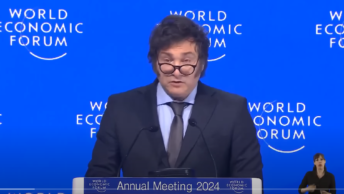Cum și-au procurat Wachovia (și alte bănci cu oficii mexicane) doze de lichiditate de la alți dealeri decât Bernanke & Cartelul:
How a big US bank laundered billions from Mexico’s murderous drug gangs
“For the time period of 1 May 2004 through 31 May 2007, Wachovia processed at least $$373.6bn in CDCs, $4.7bn in bulk cash” – a total of more than $378.3bn, a sum that dwarfs the budgets debated by US state and UK local authorities to provide services to citizens.
Antonio Maria Costa, who was executive director of the UN’s office on drugs and crime from May 2002 to August 2010, charts the history of the contamination of the global banking industry by drug and criminal money since his first initiatives to try to curb it from the European commission during the 1990s. “The connection between organised crime and financial institutions started in the late 1970s, early 1980s,” he says, “when the mafia became globalised.”
Until then, criminal money had circulated largely in cash, with the authorities making the occasional, spectacular “sting” or haul. During Costa’s time as director for economics and finance at the EC in Brussels, from 1987, inroads were made against penetration of banks by criminal laundering, and “criminal money started moving back to cash, out of the financial institutions and banks. Then two things happened: the financial crisis in Russia, after the emergence of the Russian mafia, and the crises of 2003 and 2007-08.
“With these crises,” says Costa, “the banking sector was short of liquidity, the banks exposed themselves to the criminal syndicates, who had cash in hand.”
Banks Financing Mexico Gangs Admitted in Wells Fargo Deal
No bank has been more closely connected with Mexican money laundering than Wachovia. Founded in 1879, Wachovia became the largest bank by assets in the southeastern U.S. by 1900. After the Great Depression, some people in North Carolina called the bank “Walk-Over-Ya” because it had foreclosed on farms in the region.
By 2008, Wachovia was the sixth-largest U.S. lender, and it faced $26 billion in losses from subprime mortgage loans. That cost Wachovia Chief Executive Officer Kennedy Thompson his job in June 2008.
Six months later, San Francisco-based Wells Fargo, which dates from 1852, bought Wachovia for $12.7 billion, creating the largest network of bank branches in the U.S. Thompson, who now works for private-equity firm Aquiline Capital Partners LLC in New York, declined to comment.
As Wachovia’s balance sheet was bleeding, its legal woes were mounting. In the three years leading up to Wachovia’s agreement with the Justice Department, grand juries served the bank with 6,700 subpoenas requesting information.
Not Quick EnoughThe bank didn’t react quickly enough to the prosecutors’ requests and failed to hire enough investigators, the U.S. Treasury Department said in March. After a 22-month investigation, the Justice Department on March 12 charged Wachovia with violating the Bank Secrecy Act by failing to run an effective anti-money-laundering program.
Five days later, Wells Fargo promised in a Miami federal courtroom to revamp its detection systems. Wachovia’s new owner paid $160 million in fines and penalties, less than 2 percent of its $12.3 billion profit in 2009.
If Wells Fargo keeps its pledge, the U.S. government will, according to the agreement, drop all charges against the bank in March 2011.
Între timp, Hillary Clinton scapă porumbelul: războiul împotriva drogurilor nu se încheie pentru că sunt prea mulți bani la mijloc.
Despre consecințele negative ale interzicerii drogurilor, Mark Thornton:
To the extent that prohibitions result in increased prices, they produce increased crime and political corruption. Higher prices for a prohibited product also result in the substitution of related products and the innovation of more dangerous substitutes. Prohibited products tend to be more dangerous than legal substitutes in many respects, the result of prohibition, not the product itself.
Therefore, to assume that more severe penalties or increased enforcement will result in the substitution of legal for prohibited products is to make an invalid conclusion. Prohibitions on drugs cause potency to increase. Therefore, the assumption that higher prices achieve the goals of prohibition is unfounded. Given all such considerations, the case for prohibition remains unfounded even if the indirect connection between the consumption of certain products and social ills does exist.





